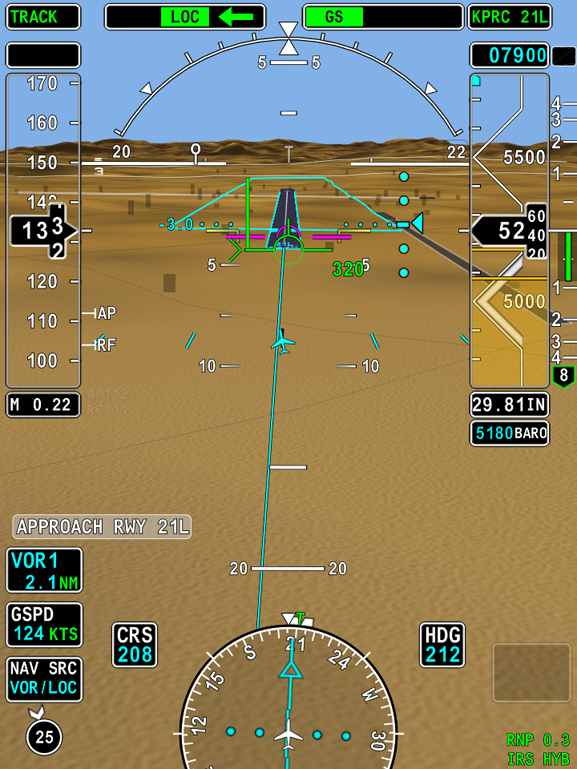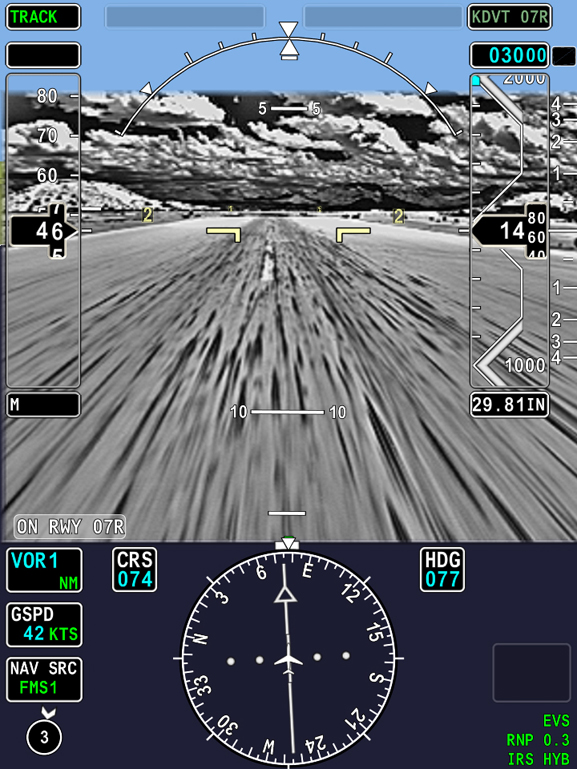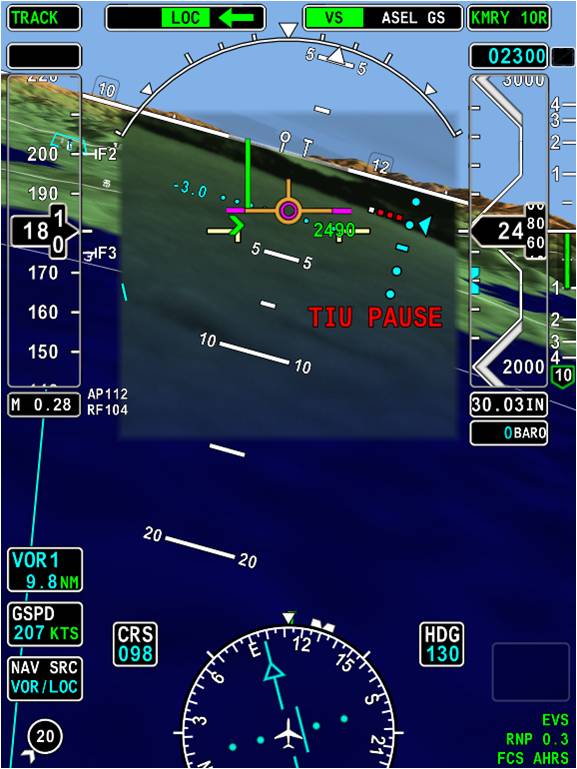Honeywell’s SmartView synthetic vision system (SVS) enhances crew situational awareness and reduces pilot workload to help avoid accidents during all phases of flight.
With SmartView Synthetic Vision, You’re Always In The Clear — Even When You’re Not
You’ll always have a clear approach with Honeywell’s SmartView synthetic vision system.
SmartView synthesizes flight information from multiple onboard databases, GPS and inertial reference systems into a complete, easy-to-understand 3-D rendering of the forward terrain. Its unparalleled resolution provides a view that pilots would see only on a clear day.
Holiday Travel Without Weather Delays;
Winter weather and holiday travel often create a scenario of delays, cancellations and passenger frustration. Honeywell is developing technology that will make scenes like those a thing of the past. Combining Honeywell’s synthetic vision – which displays outside terrain and obstacles in a realistic view– and infrared camera technology will create a weather-proof image of the runway and airport, allowing pilots to land in lower visibility conditions.
Honeywell and Gulfstream Win Funding To Develop Synthetic Vision Technologies;
$1.2 Million Win to Fund Flight Testing of Synthetic and Enhanced Vision Technologies for the NextGen Flight Environment
Honeywell and Gulfstream, the only companies to have a certified synthetic vision system on large business jets, announced they have been awarded a $1.2 million contract for an 11-month testing program of Synthetic and Enhanced Vision Systems (SEVS) technologies for the NextGen flight environment.
Under the NASA contract, Honeywell and Gulfstream Aerospace Corporation will explore the operational enhancements provided by a Honeywell-developed Synthetic Vision System (SVS) with Gulfstream’s Enhanced Vision System (EVS) to further extend the capabilities of cockpit displays to facilitate the use of visual flight rule-like procedures in instrument conditions.
Honeywell’s current SVS system provides pilots with a clear depiction of the terrain and potential obstacles exactly as they would see them looking out the cockpit, regardless of outside weather conditions. Gulfstream’s EVS uses an infrared sensor, which is capable of seeing in night and low visibility conditions, to project an image on the Head-Up Display (HUD) that is conformal to the outside world.
Honeywell and Gulfstream will conduct flight tests of SVS and EVS by allowing pilots to fly approaches to an airport in instrument conditions as low as 500 feet above the runway. Flight trials will investigate using SVS as low as 100 feet above threshold, transitioning to EVS and using it to land, thereby extending the current operational capability of SVS-equipped aircraft.
“Honeywell is extending its technical leadership in synthetic vision products under this program,” said Carl Esposito, vice president, Product Management, Honeywell Aerospace. “We brought synthetic vision to aviation nearly five years ago, and this program expands the capacity of our technology to offer flight crews greater capability to land in challenging weather environments.”
The program’s overall research goal is to provide data for effective development and implementation of regulatory guidance and procedures that support the introduction and use of synthetic and enhanced vision system technologies in support of Equivalent Visual Operations (EVO), a key initiative in the FAA’s plan for NextGen. Such activities mirror those of Honeywell and Gulfstream and are currently research topics of interest for both companies.
“This approach will assist NASA in meeting their aviation safety goals to improve the inherent safety attributes of new and legacy vehicles and overcome aircraft safety technological barriers that would otherwise constrain the full realization of the NextGen flight environment,” said Pres Henne, senior vice president, Programs, Engineering and Test, Gulfstream Aerospace Corporation.
The program objective is to conduct flight test activities to obtain pilot-in-the-loop operational test data using Synthetic and Enhanced Vision Systems. The Honeywell-Gulfstream team will assist the government to develop the comprehensive flight test plan and provide objective data measures of pilot performance during pilot-in-the-loop flight tests. Honeywell will leverage industry-leading experience in flight test to determine the usability and safety of SEVS as certified on the PlaneView™ equipped Gulfstream G350, G450, G500, and G550 aircraft.
Honeywell’s SmartView™ Synthetic Vision System is available today as an upgrade for Primus Epic equipped Gulfstream aircraft and is installed on more than 170 airplanes. The Primus Epic system has also been selected for Gulfstream’s 650 aircraft.
In addition to the use of their G450 for flight test, Gulfstream brings its vast experience in low visibility flight test operations and development and certification of display concepts to the program. These activities will be the basis for enabling SEVS avionics pursuant to NextGen and NASA Aviation Safety and Integrated Intelligent Flight Deck (IIFD) goals.
Integration Of Real-Time Infrared Data With Synthetic Vision Is Expected To Significantly Change The Way Pilots Fly
Honeywell, the first avionics company to bring a certified synthetic vision system to business aircraft, is now flying Enhanced Vision Systems infrared technology integrated with synthetic vision on a test aircraft to develop the future version of the SmartView™ synthetic vision. It is expected the blended synthetic vision and infrared technologies will provide pilots with even greater situational awareness at night or in low-visibility conditions.
This vast improvement could eventually challenge today’s taxi, takeoff and landing minimums and provide greater operating flexibilities.
“I believe that Honeywell’s expertise in situational awareness and human factors work will result in improvements that will provide pilots the precise and reliable information to manage their aircraft as though they were in visual conditions even in the darkest and stormiest nights,” said Chad Cundiff, Honeywell Aerospace vice president of Crew Interface products.
Honeywell’s SmartView, internationally recognized as a breakthrough in flight crew interface technology, provides pilots with a clear depiction of the terrain and potential obstacles exactly as they would see them looking out the cockpit windscreen, regardless of outside weather conditions. Integrating real-time forward-looking data from an infrared camera onto the SmartView display adds an advanced level of outside terrain details to improve the sense of motion, enhance detection of the runway environment at night and in bad weather to reveal obstacles in the plane’s path.
“Initial flight tests indicate pilots appreciate the addition of the infrared imagery on the flight display and it aids in detecting the runway lights and approach environment during reduced visibility flying,” Cundiff said. “Enhancing the SmartView terrain database with the infrared sensor data adds real-time awareness of vehicles, other aircraft, or obstacles in the airport environment, further improving safety during low visibility approach, taxi and takeoff.”
Honeywell’s evaluation of the forward-looking infrared display so far includes more than 20 hours of flight tests, more than 50 approaches in day and night instrument and visual flying conditions. Additional flight testing is occurring in October and in December.
Honeywell’s SmartView display is based on the patented Enhanced Ground Proximity Warning System (EGPWS) terrain database with more than 800 million flight hours of proven operation on commercial aircraft, business jets and helicopters.



